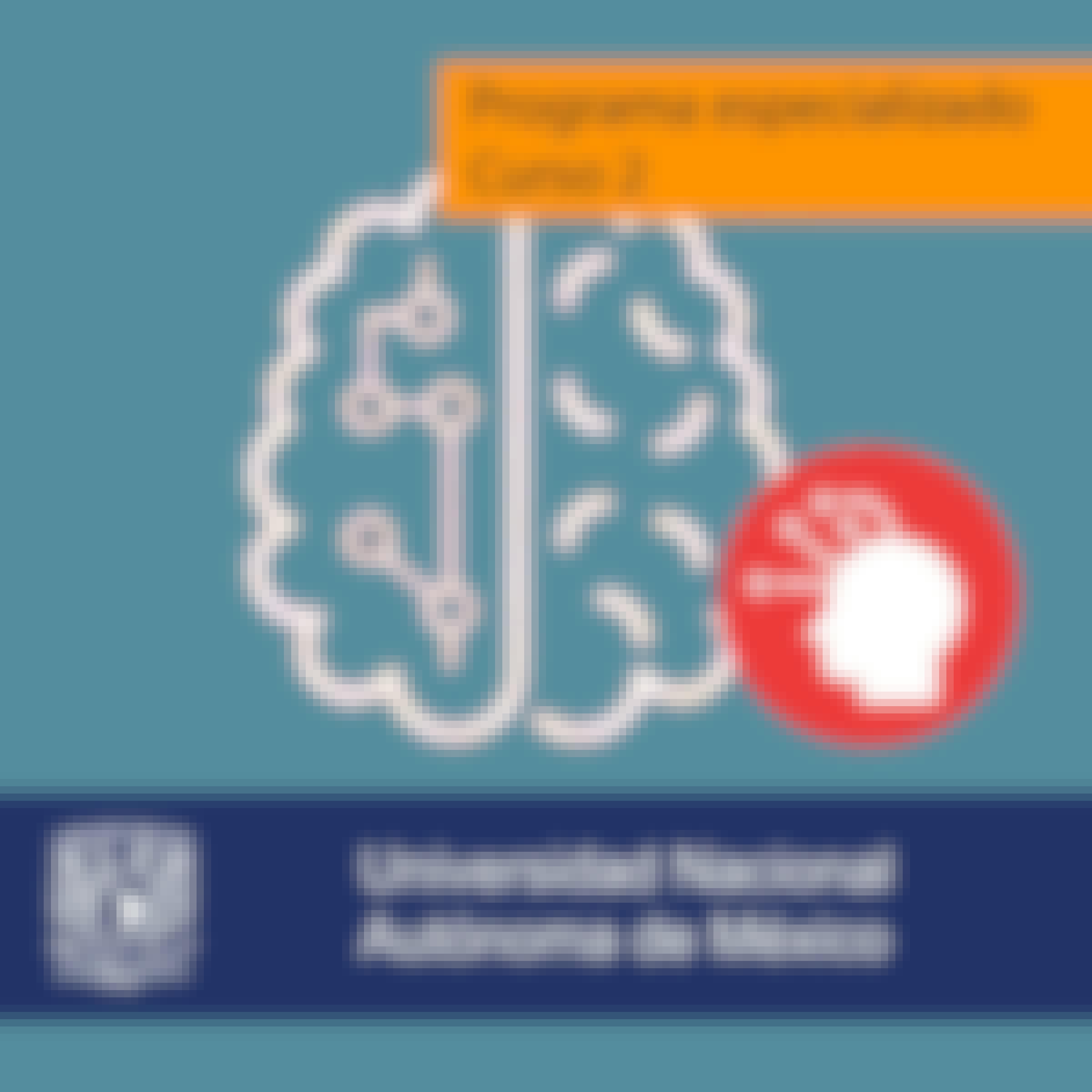- Browse
- Neural Networks
Results for "neural networks"
 Status: NewNewStatus: Free TrialFree TrialU
Status: NewNewStatus: Free TrialFree TrialUUniversity of Cambridge
Skills you'll gain: Human Development, Psychology, Neurology, Child Development, Mental Health Diseases and Disorders, Anatomy, Physiology, Biology, Research
4.1·Rating, 4.1 out of 5 stars26 reviewsMixed · Course · 1 - 3 Months
 Status: Free TrialFree TrialJ
Status: Free TrialFree TrialJJohns Hopkins University
Skills you'll gain: Large Language Modeling, Email Security, Exploitation techniques, AI Security, Border Gateway Protocol, Malware Protection, Mobile Security, Cybersecurity, Network Security, Open Web Application Security Project (OWASP), TCP/IP, Threat Detection, Network Analysis, Internet Of Things, Network Protocols, Network Monitoring, Responsible AI, Network Routing, Infrastructure Security, Application Security
3.9·Rating, 3.9 out of 5 stars9 reviewsIntermediate · Specialization · 3 - 6 Months
 Status: PreviewPreview
Status: PreviewPreviewSkills you'll gain: Remote Access Systems, TCP/IP, Network Protocols, System Programming, Operating Systems, Hardware Architecture, Performance Tuning, Computer Hardware
4.6·Rating, 4.6 out of 5 stars46 reviewsIntermediate · Course · 1 - 3 Months
 Status: Free TrialFree TrialQ
Status: Free TrialFree TrialQQueen Mary University of London
Skills you'll gain: Delegation Skills, Leadership Development, Leadership, Executive Presence, Time Management, Leadership and Management, Influencing, Conflict Management, Professional Development, Emotional Intelligence, Self-Awareness, Communication, Adaptability
4.8·Rating, 4.8 out of 5 stars66 reviewsAdvanced · Course · 1 - 4 Weeks
 Status: Free TrialFree TrialF
Status: Free TrialFree TrialFFractal Analytics
Skills you'll gain: AI Enablement, Business Leadership, Strategic Leadership, Responsible AI, Business Strategy, Generative Adversarial Networks (GANs), Data Strategy, Business Transformation, Strategic Decision-Making, Organizational Effectiveness, Deep Learning, Artificial Intelligence, Organizational Development, Human Centered Design, Data Quality, Design Thinking, Governance, User Centered Design, Ethical Standards And Conduct
4.5·Rating, 4.5 out of 5 stars14 reviewsIntermediate · Course · 1 - 3 Months
 Status: Free TrialFree Trial
Status: Free TrialFree TrialSkills you'll gain: Routing Protocols, TCP/IP, Network Switches, Virtual Local Area Network (VLAN), Network Protocols, Network Security, Network Troubleshooting, Network Routing, Computer Networking, Open Shortest Path First (OSPF), Dynamic Host Configuration Protocol (DHCP), Border Gateway Protocol, Firewall, Proxy Servers, Encryption, Authentications
4.8·Rating, 4.8 out of 5 stars12 reviewsIntermediate · Course · 1 - 3 Months
 Status: Free TrialFree Trial
Status: Free TrialFree TrialSkills you'll gain: Security Information and Event Management (SIEM), Splunk, Threat Detection, System Monitoring, Cybersecurity, Security Management, Event Monitoring, Incident Response, Data Analysis Software, Information Management, Data Management, Data Storage, Configuration Management, User Interface (UI)
4.7·Rating, 4.7 out of 5 stars233 reviewsBeginner · Course · 1 - 4 Weeks
 Status: Free TrialFree TrialU
Status: Free TrialFree TrialUUniversidad Nacional Autónoma de México
Skills you'll gain: Bayesian Network, Computational Logic, Markov Model, Artificial Intelligence, Game Theory, Theoretical Computer Science, Logical Reasoning, Python Programming, Deductive Reasoning, Reinforcement Learning, Probability, Verification And Validation, Decision Tree Learning, Algorithms, Probability Distribution
4.1·Rating, 4.1 out of 5 stars113 reviewsIntermediate · Course · 1 - 3 Months
 Status: Free TrialFree Trial
Status: Free TrialFree TrialSkills you'll gain: Agile Project Management, Sprint Retrospectives, Scaled Agile Framework, Agile Methodology, Emotional Intelligence, Team Management, Risk Management, User Story, Team Leadership, Initiative and Leadership, Employee Coaching, Team Building, Stakeholder Engagement, Leadership, Backlogs, Kanban Principles, Conflict Management, Earned Value Management, Stakeholder Analysis, Sprint Planning
4.5·Rating, 4.5 out of 5 stars13 reviewsIntermediate · Specialization · 1 - 3 Months
 Status: PreviewPreviewU
Status: PreviewPreviewUUniversity of California, Santa Cruz
Skills you'll gain: Professional Networking, Positivity, Design Thinking, Decision Making, Relationship Building, Professional Development, Creative Thinking, Interviewing Skills, Optimism, Self-Awareness, Negotiation, Personal Development, Emotional Intelligence, Goal Setting
4.9·Rating, 4.9 out of 5 stars16 reviewsBeginner · Course · 1 - 4 Weeks
 Status: Free TrialFree TrialM
Status: Free TrialFree TrialMMicrosoft
Skills you'll gain: Generative AI, Microsoft Copilot, Generative Adversarial Networks (GANs), Natural Language Processing, Data Quality, Anomaly Detection, Data Storytelling, Technical Communication, Responsible AI, Data Visualization, Data Ethics, Data-Driven Decision-Making, Interactive Data Visualization, Data Pipelines, Data Cleansing, Data Visualization Software, Data Preprocessing, Data Science, Autoencoders, Critical Thinking
4.7·Rating, 4.7 out of 5 stars65 reviewsBeginner · Specialization · 1 - 3 Months
 Status: Free TrialFree TrialU
Status: Free TrialFree TrialUUniversity of California, Davis
Skills you'll gain: Open Web Application Security Project (OWASP), Authentications, Exploit development, Penetration Testing, Application Security, Vulnerability Assessments, Code Review, Vulnerability Management, Secure Coding, Authorization (Computing), Java, Java Programming, Dependency Analysis, Docker (Software), JSON, Git (Version Control System)
4.4·Rating, 4.4 out of 5 stars66 reviewsIntermediate · Course · 1 - 4 Weeks
In summary, here are 10 of our most popular neural networks courses
- The neuropsychology of decision making: University of Cambridge
- Information Assurance Analysis: Johns Hopkins University
- The Fundamentals of RDMA Programming: NVIDIA
- Stepping Up: Preparing Yourself for Leadership: Queen Mary University of London
- Successful AI Strategies: A CEO's Perspective: Fractal Analytics
- TCP/IP, Routing, and Wireless Networking: Packt
- Introduction to SIEM (Splunk): EDUCBA
- Razonamiento artificial: Universidad Nacional Autónoma de México
- PMI Agile Certified Practitioner (PMI-ACP): Packt
- The Career Design Lab: Change your Job, Change your Life: University of California, Santa Cruz










